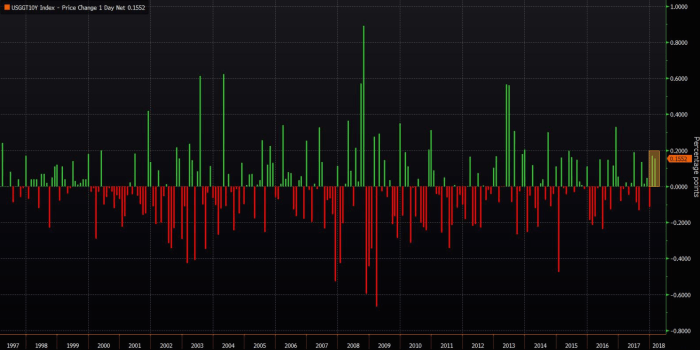10Y yields are back near their lowest levels since last month’s CPI beat, having given back Tuesday’s Jerome Powell-inspired spike that derailed equities.
They’ll be no shortage of narrative fodder on Thursday with Powell’s second act (this time in testimony to the Senate) and PCE on the docket, but panning out, the question still lingers: how high will yields go? And of course the follow-up that no one can answer: what is the magic number on 10s beyond which equities can no longer pretend not to care?
Here are the monthly yield changes for UST benchmarks from February:
As a reminder, the two-month rise in real yields (i.e. January plus February) was the largest since the election:

Just to be clear, folks are getting pretty deep into the weeds here when it comes to forecasting yield levels given a set of assumptions. And by “deep in the weeds” I just mean that people are bending over backwards to find a reliable framework for forecasting. It’s not so much that the methodologies being employed are particularly innovative (this isn’t exactly rocket science), it’s just that the amount of time being spent on it is probably some semblance of absurd considering the inherent futility of trying to accurately forecast this. Here’s BofAML’s latest:
The reason I wanted to highlight that is obvious: Powell’s testimony suggests that an epochal shift may be afoot in terms of the “gradualistic” approach to hikes, although one could could just as easily argue that ol’ Jay just isn’t very good at reading the proverbial crowd yet and that accounts for his errant comment about “his own view” on Tuesday.
But playing out in the background here is a dramatically different supply picture thanks to Trump’s tax cuts and fiscal stimulus push. The supply deluge raises the following obvious question: who’s going to buy it all?









Leave A Comment